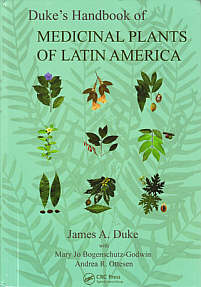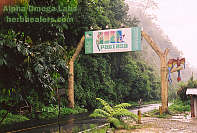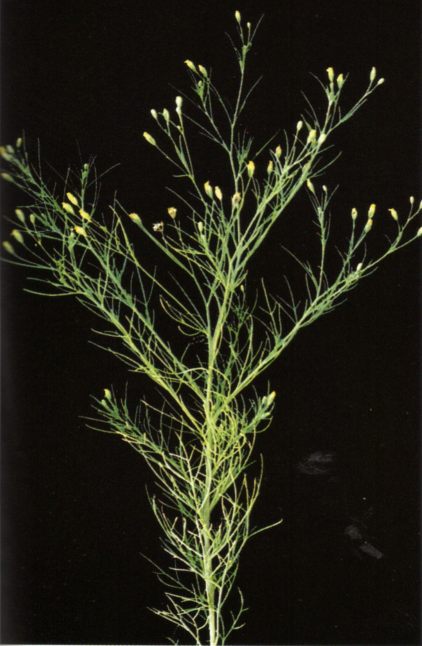|
Blood Purifier / Anti-Microbial / Weight Loss / Indigestion

Canchalagua
(Schkuhria pinnata)
Ground Leaves & Root
of Canchalagua
Code 317 -- Price: $4.95
Ground tea leaves: 85 gr. (net wt)
Makes Nearly 2 Gallons of Tea
(Using 11 g. or ≅ 2 T. to make a quart)
Code 317C -- Price: $18.95
120 Capsules x 500 mg.
Order Now
 Email
Email
 Summarized Description:
Canchalagua Summarized Description:
Canchalagua is one of our native
traditionals, and although
originating from the Andes of South America, it has, over the past
century, been naturalized to many places around the world. Like
Ajo T�, canchalagua has a broad range of
medicinal uses and because of its immune-boosting properties,
there are few ailments that do not see at least some benefit
from its use.
 Capsule Instruction: Capsule Instruction:
Take one capsule, 2x a day, unless otherwise instructed by
your naturopath or other health care practitioner.
Tea Uses & Protocols
 I. Preparation --- if you can boil water, you
can make this product: Professional herbalists will
recognize this as a standard decoction. I. Preparation --- if you can boil water, you
can make this product: Professional herbalists will
recognize this as a standard decoction.
- Add 1/3 cups of Canchalagua to a large sauce pan,
along with one quart of purified water (0.95 liters).
You have enough product in the product bag to do
this seven to eight times.
- Heat until a very low-level boil or "barely boiling" level
has been reached and continue boiling for 15 minutes.
- Stir occasionally.
- Remove heat source and let cool.
- Pour the contents of your pan through a strainer
and into a large glass vase or container so
as to remove most of the tea fragments.
- Dispose of tea fragments.
- Drink your tea hot . . . refrigerate glass vase and
enjoy later as a refreshing cold tea . . . or refrigerate
and reheat later if you want to enjoy the product as a hot tea.
You may add cinnamon, lemon, and/or honey to taste.
More specific protocols for the use of the product are provided below.
 II. Protocols. II. Protocols.
 Take under the advisement
of your naturopath or other health care practitioner. Take under the advisement
of your naturopath or other health care practitioner.
Contraindications
 None reported. None reported.

Medicinal Activities
 Further information for practitioners:
World-famous botanist Dr. James Duke attributes the following activities
to this plant (p. 612-613; see hardcopy cover at right),
drawn from the extant literature. (See his graduation for "level of
efficacy" on our traditionals page;
followed by Duke's bibliographic abbreviations (in capital letters),
which we identify
on a separate page.) Further information for practitioners:
World-famous botanist Dr. James Duke attributes the following activities
to this plant (p. 612-613; see hardcopy cover at right),
drawn from the extant literature. (See his graduation for "level of
efficacy" on our traditionals page;
followed by Duke's bibliographic abbreviations (in capital letters),
which we identify
on a separate page.)
- Antiallergic (f; MPG)
- Antidiabetic (f; MPG);
- Antiinflammatory (f1; MD2, RA2);
- Antimalarial (f1; MPG; RA2; X17486688);
- Antispasmodic (1; RA2);
- Antitussive (f; RA2);
- Antiyeast (1; RA2);
- Bactericide (1; MPG; RA2);
- Capillary Tonic (f; RA2);
- Cicatrizant (f; MPG);
- Cytotoxic (1; X17486688);
- Depurative (f; MPG; RA2)
- Detoxicant (f; MPG);
- Digestive (f; MPG; RA2);
- Diuretic (f; MPG; RA2);
- Fungicide (1; RA2);
- Hypoglycemic (f; EGG, RA2);
- Insecticide (f; DLZ);
- Lipolytic (f; MPG);
- NF-kappaB-Inhibitor (1; RA2);
- NO-Inhibitor (1; RA2);
- Pediculicide (f; RA2);
- Plasmodicide (1; RA2; X17486688);
- Pulicide (f; MPG, RA2);
- Stomachic (f; RA2);
- Styptic (f; RA2);
- Vulnerary (f; MPG; RA2).
Indications
 Further information for practitioners:
Duke provides the following indications for this plant: Further information for practitioners:
Duke provides the following indications for this plant:
- Abscesses (f; MPG);
- Acne (f; EGG);
- Allergies (f; MPG; RA2);
- Bacillus (1; MPG);
- Bacteria (f1; MPG; RA2);
- Biliousness (f1:ROE);
- Bleeding (f; RA2);
- Calculus (f; ROE);
- Chancre (f; ROE);
- Childbirth (f; ROE);
- Coughs (f; RA2);
- Cystosis (f; DLZ);
- Dermatosis (f; RA2);
- Diabetes (f; EGG; MPG; RA2);
- Digestion (f; RA2);
- Dysmenorrhea (f; ROE);
- Dyspepsia (f; MPG);
- Eczema (f; RA2);
- Enteritis (f; ROE);
- Fungus (1; RA2);
- Gastritis (f; RA2; ROE);
- Hepatitis (f; RA2; ROE);
- Hyperglycemia (f; RA2);
- Infection (f1; MPG; RA2);
- Inflammation (f1; MPG; RA2);
- Malaria (f1; DLZ; MPG; RA2; X17486688);
- Mycosis (1; RA2);
- Nephrosis (f; DLZ);
- Obesity (f; DLZ; MPG);
- Oliguria (f; MPG);
- Ophthalmia (f; ROE);
- Pediculosis (f; RA2);
- Prostatitis (f; RA2);
- Pulmonosis (f; ROE);
- Respirosis (f1; ROE);
- Rheumantism (f; RA2);
- Sores (f; MPG);
- Spasms (1; RA2);
- Splinters (f; EGG);
- Stomachache (f; RA2; ROE);
- Stomatitis (f; MPG);
- Stones (f; ROE);
- Tumors (f; ROE);
- UTI's (urinary track infections); (f; RA2);
- Wounds (f; MPG; RA2);
- Yeast (f1; RA2);
- Yellow Fever (f; ROE).
|
 To U.S. Users: To U.S. Users: This product
have not been evaluated by the U.S. Food & Drug Administration.
It is not intended to diagnose, treat, cure, or prevent any disease.
|
 Sourcing From
Sourcing From
Amazonian Wilderness
 All the materials used to
make our Amazonian & Andean Medicinal Teas are wild-crafted and harvested
from the Central Andes and Amazonian regions of Ecuador and Peru.
There are no cultivated varieties used.
Click photo to enlarge.
Ethnobotanical
Dosage / Usage
 Duke provides a "food farmacy
potential" score for this plant of, "FNFF=X" ("I found nothing
credible suggesting the plant as food.") He indicates
a recommended dosage as "1 cup shoot or plant infusion 3x/day as blood cleanser
and diuretic (RA2); 1 to 2 g. capsule 2x/day for acne and as antimalarial." (RA2)
 Indications for its
ethnobotanical use worldwide are broad and fall into the
following categories (p. 613):
- Gastrosis, malaria, and stomachaches (Africa).
- Gastrosis, stomachaches (Kenya)
- Malaria (Altenos indians).
- Antispasmodic (Native American)
- Diarrhea, respiratory infection, UTI's, antibiotic, vulnerary, weight loss, depurative (Argentina)
- Weight loss -- (root decoction / Bolivia / Peru)
- Malaria, cystosis, nephrosis (Bolivia)
- Acne, eczema, dermatitis, blood cleaner (Ketchwa)
- Repel fleas and lice (Bolivia and elsewhere in Latin America);
used similarly in Paraguay as an insecticide.
- Indigestion (Peru / Mexico)
- Vaginal yeast --(Peru)
- Obesity (Argentina, Bolivia, Peru, and Ecuador)
Additional Online
Resources on
This Herb
- This plant's entry on Herbal Ayurveda.
- Pictorial from Discover Life.
- Rainfree "Tropical Plant Database"
entry for canchalagua. Provides additional detail on the plant's medicinal
properties, along with medical literary
citations, as well as a chart on ethnomedical uses.
- USDA entry for
canchalagua from the its Natural Resources Conservation Service. Provides
detail on its botanical classification, as well as a map of its distribution
inside the continental U.S. See also the USDA's entry by its
Germplasm Resources
Information Network, with additional database resources on the plant.
(Similarly, a distribution
map for New South Wales, Australia is online, a
photos from the same areas in NSW
can be found on Flickr.)
- Efloras.org
description of the plant, with emphasis on its physicalities.
- Entry for the plant
from the Southwest Environmental Information Network, again focussing on the plant's
physicalities.
- A rigorous
antioxidant evaluation of the plant, published by the Chemical Society of Mexico.
(This is the English version). Speaking of Mexico, there's a good site in Spanish
on this plant with
pictures and helpful links. A similar study
to the one above, also focussing on the plant's "sesquiterpene lactones," and yet another
from IngentaConnect.
- Vascular Plants
of the Gila Wilderness -- brief entry from the Western New Mexico Department of Natural Sciences
for this plant, with pictures.
- MetAfro entry, listing
references to medicinal studies (with distribution) on canchalagua in Africa.
- Scientific study showing
efficacy of this plant against acne;
another supporting its hypoglycemic activity
in diabetes; another
showing its effect in treating malaria.

|




